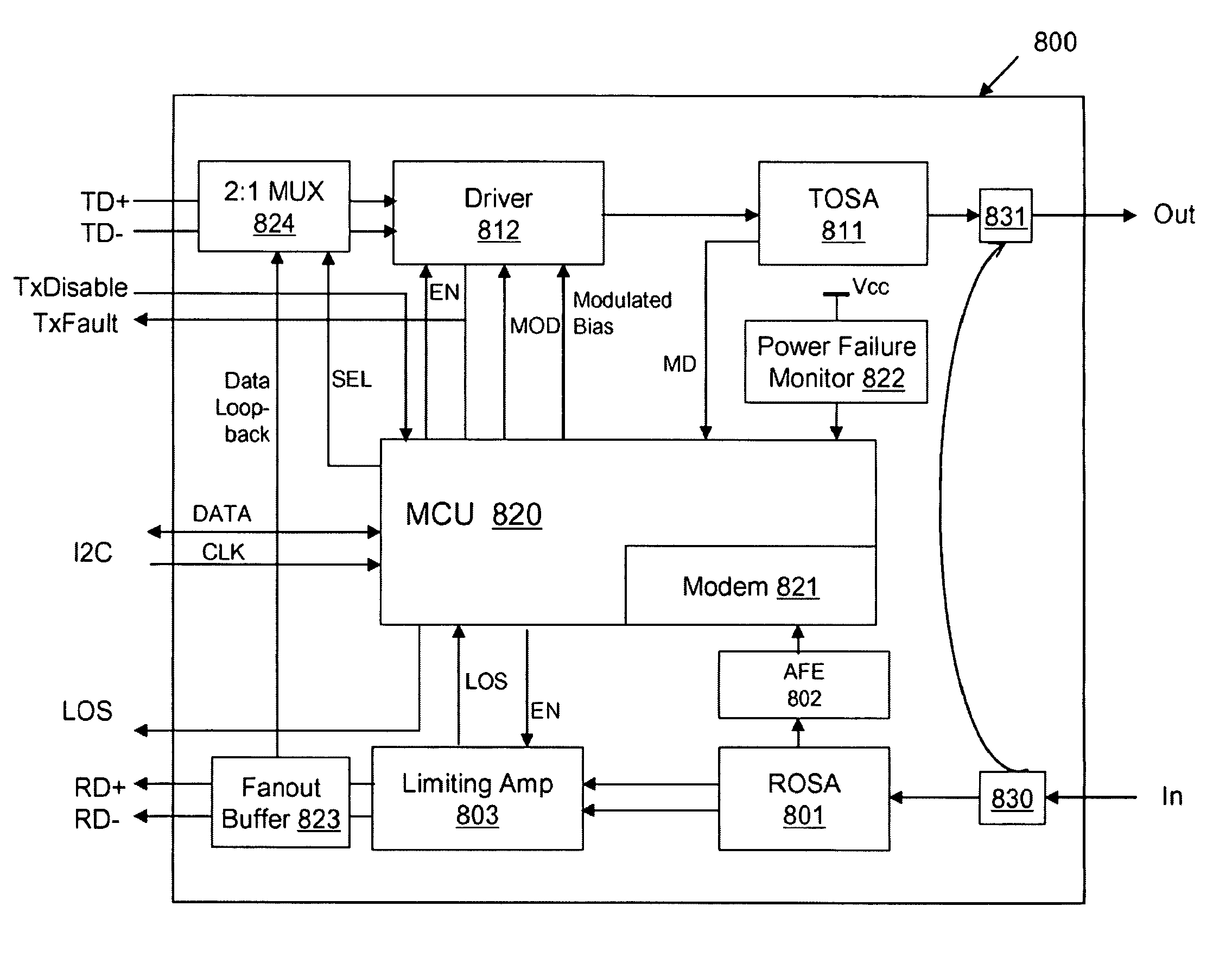Intelligent optical systems and methods for optical-layer management
a technology of intelligent optical systems and optical layers, applied in electromagnetic transceivers, transmission monitoring/testing/fault-measurement systems, transmission monitoring, etc., to achieve the effect of facilitating communication, and reducing the need for demarcation equipmen
- Summary
- Abstract
- Description
- Claims
- Application Information
AI Technical Summary
Benefits of technology
Problems solved by technology
Method used
Image
Examples
Embodiment Construction
Referring to FIG. 1, an optical network system 100 includes network equipment 101 and 102 that are installed at different locations and can communicate in optical signals via an optical link 103. The optical link 103 can for example include a single optical fiber, or a cable containing a bundle of optical fiber. The equipment 101 includes an optical transceiver 110 that is configured to perform conversions between optical and electrical signals, a data processing unit 114 that processes communication signals, and a management module 112 that monitors and controls the functions of the network equipment 101. Similarly, the equipment 102 includes an optical transceiver 120 capable of performing conversions between optical and electrical signals, a data processing unit 124 that processes the communication signals, and a management module 122 that monitors and controls the functions of the network equipment 102. Optionally, a higher level network management system 105 manages entire netw...
PUM
 Login to View More
Login to View More Abstract
Description
Claims
Application Information
 Login to View More
Login to View More - R&D
- Intellectual Property
- Life Sciences
- Materials
- Tech Scout
- Unparalleled Data Quality
- Higher Quality Content
- 60% Fewer Hallucinations
Browse by: Latest US Patents, China's latest patents, Technical Efficacy Thesaurus, Application Domain, Technology Topic, Popular Technical Reports.
© 2025 PatSnap. All rights reserved.Legal|Privacy policy|Modern Slavery Act Transparency Statement|Sitemap|About US| Contact US: help@patsnap.com



